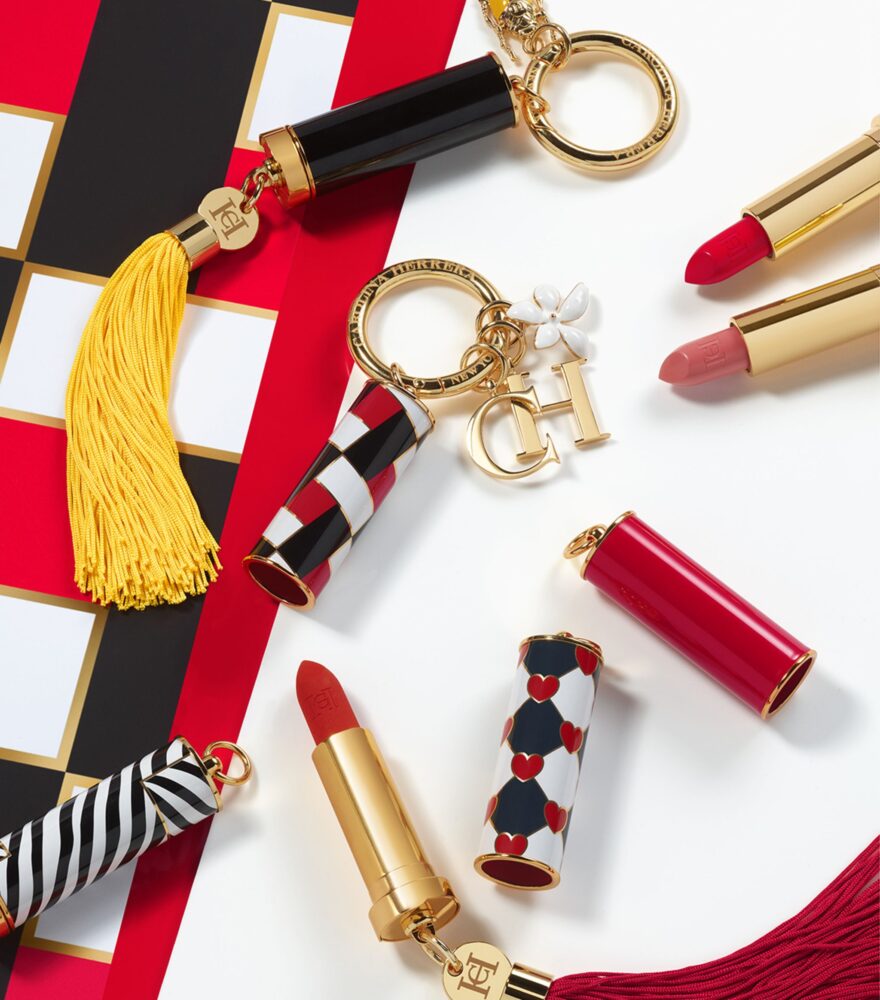By now, you’ve all probably seen (and swooned over) the magnificent Carolina Herrera lipsticks. And while the cosmetic formula is certainly a reason they have been so well received the world over, it’s the exterior of the tubes which has really afforded them a place in the makeup bags of beauty enthusiasts all around the globe.
Isn’t that an interesting concept? Packaging being the reason a product is chosen and adored, rather than the actual functionality or formula we are paying for?

Don’t get us wrong, the 36 shades in matte, satin and sheer textures definitely live up to the standards of MUAs and beauty bloggers everywhere, but is that the reason they are THE topic of discussion on just about every social network, or the reason so many have taken the plunge and made the pricey purchase?
According to Joe Cook, Vice President of Delta Global, an innovative packaging solutions provider for some of the biggest names in beauty, this answer is the result of a current consumer shift which is seeing greater desirability for customised goods and personalised services.
Here, Joe explains why we are seeing the change and what this will mean for packaging in the beauty industry going forward.
Increasingly, we are seeing a higher demand for personalisation from brands. And this isn’t exclusive to just one aspect of their offering. Whether it be in the way we receive communications, the content we are shown, or a product’s look and formula, we want things in our way and on our terms.

And consequently, we are beginning to see more and more brands step up with innovative ways to cater to this demanding need by tailoring everything from product contents and packaging, right through to the messages used to market them. Brands doing this well are also those gaining greater engagement, even in the current commercial climate.
Standing out
Within cosmetics, it’s no secret that the market is saturated with countless offers, brands and products to choose from. And with all claiming to be the next big thing and the answer to our vanity woes, it can be hard to keep up. More often than not however, we find one we like and don’t budge unless something truly groundbreaking comes along.
But while packaging might not be the type of groundbreaking you have in mind, it does play a significant role in generating interest and attracting consumers’ attention in the first instance. And that is the first step in winning over those still searching for something they like, or have become stuck in their ways.
This is certainly the case within physical retail, which for cosmetics, will remain a popular sales channel for lack of an online alternative to accurate colour matches, patch tests and beauty counter makeovers.
Therefore, a brand’s use of packaging is a sure-fire way to grab the attention of passing consumers. But by adding customisability to the mix, they can also guarantee better engagement and a longer lasting relationship. And this is because customisation can help brands create emotional bonds with their customers.
Do it yourself
The phenomenon can be likened to the famous theory coined the ‘IKEA effect’. I know what you’re thinking, how does customisable makeup, in any way, resemble DIY furniture? Well, it’s not so much the products that are alike, but rather, it has more to do with the processes behind them.
The theory suggests that deeper connections with and more pleasant perceptions of products are formed with those a customer has involvement with at the building and development stages. I’m sure we can all relate to the sense of satisfaction we have once we’ve put together those many parts and pieces and the wardrobe that was once a flat pack, is now standing and sturdy.
The same is true for all customisable goods, whether that’s makeup, furniture or anything else for that matter. We feel a much deeper connection to those items we have essentially, helped build.
So, in the case of cosmetics and healthcare, we have brands such as Clinique and Function of Beauty who instil customisability within product formulation by allowing consumers to choose ingredients and scents tailored to their unique needs and preferences. And others, such as Carolina Herrera, that enable customisation at the packaging level, allowing products to look the way they want them to.
Both are just as effective at evoking these deeper feelings of connection and positive perceptions towards a product as in either case, the customer has played a fundamental role at shaping the final result.
But what is it about these feelings and perceptions that then translate into commercial success for the brand? The answer to that question can be seen quite clearly when you examine the behaviours of any modern day consumer. Ultimately, today’s consumers prefer products that are custom made and personal to them, with figures even showing that 1 in 5 are willing to pay 20% more for items that are exactly that.
Undeniably, there is value in creating customisable cosmetics. But when this is built into a product’s packaging, there is real potential to create an offering that goes above and beyond to meet a customer’s needs and expectations. And this way, brands can evoke positive feeling and perceptions towards them, that is much more likely to transcend into customer loyalty, advocacy and organic word of mouth promotion – and what brand wouldn’t want that?
The case of Carolina Herrera, albeit rare, isn’t unique. Instead, it’s part of a growing trend, and one that we will only be seeing more of from brands in the near future.
















